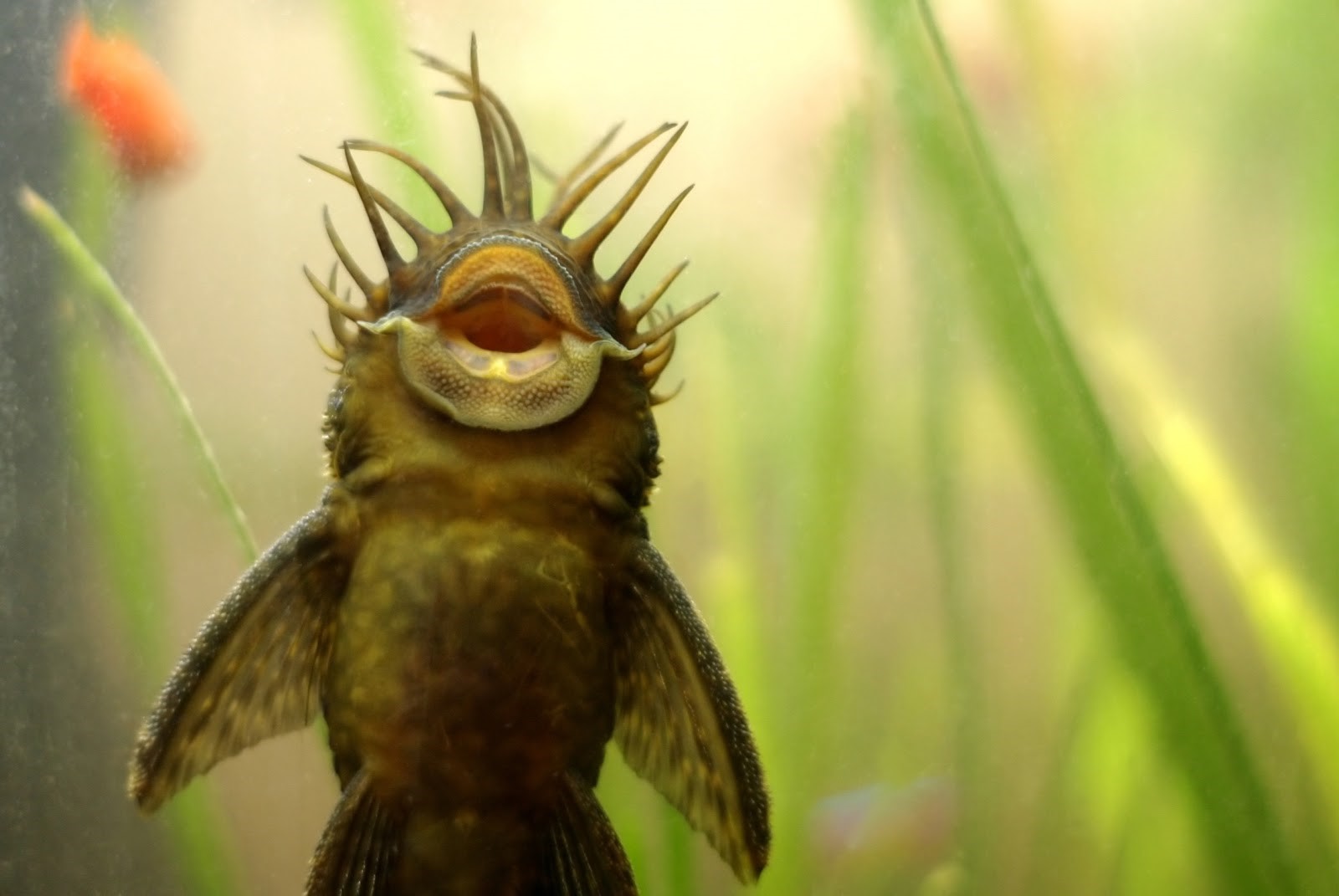If you’re interested in keeping “suckermouth” catfish (also referred to as “Plecos”) in your aquarium, the adult size of some of the species mentioned in our article on these catfish might seem a little intimidating. But don’t worry: not all Plecos grow into tankbusters.
If you can provide an aquarium of 30 gallons or up, you can already keep a Pleco. The smaller bristlenose Plecos from the Ancistrus genus are fascinating fish to keep and a great addition to many types of communities!
Keep reading for everything you need to know about keeping Ancistrus catfish in your aquarium.
Bristlenose Pleco (Ancistrus sp.) description
Members of the Ancistrus genus are commonly collectively referred to as bristlenose Plecos. They lend their name from the males’ facial ‘antlers’, which are indeed very bushy in some adults and make it easy to tell the sexes apart.
With a maximum size of around 5”, this is one of the smaller Plecos out there, which explains their popularity in the aquarium hobby. They are widely kept and have even been selectively bred for various traits. You can find a bristlenose Pleco albino variety out there, as well as spectacularly long-finned specimens.
| Name (common, scientific) | Bristlenose Pleco, Ancistrus sp. |
| Minimum tank size | 30 gallons |
| Minimum group size | N/A (can be kept alone) |
| Temperature | 70-79 °F |
| pH | 5.5-7.5 |
| Difficulty level | Easy |
Bristlenose Pleco (Ancistrus sp.) aquarium
Although an adult bristlenose Pleco is still relatively small, that unfortunately doesn’t mean you can get away with keeping it in anything less than a 30-gallon aquarium. This is mainly due to the amount of waste a Pleco produces: they are known for being very messy eaters and ‘poop machines’ that can quickly foul a smaller aquarium! Investing in a powerful filter is a good idea if you want to keep these species.
Bristlenose Plecos are undemanding when it comes to water values, but since they are naturally found in acidic, soft-water rivers in South America they do appreciate a pH that’s on the lower side. Plenty of water flow is appreciated as it keeps the water well-oxygenated.
Your bristlenose Pleco won’t care too much about what its aquarium looks like, but one important factor that you do have to keep in mind is cover. These catfish naturally spend a good portion of their day in hiding, clinging to the bottom of a piece of driftwood or waiting in a cave for the aquarium lights to go out. The kind of hide is not important just as long as the fish can retreat when it feels the need to. Coconut caves, large-leaved plants, or even a strategically placed piece of driftwood all add to your Pleco’s sense of security.
When it comes to tankmates, bristlenose Plecos are great neighbors. They are peaceful and won’t bother other fish, while at the same time being sturdy enough to not be bothered by overly assertive tankmates. They will thrive in most community set-ups and make great tankmates for fish that can normally be somewhat bothersome. Dwarf cichlids like the Kribensis and Agassiz’s dwarf cichlid are good examples.
You can opt for schooling fish that hail from similar waters, like the species on our list of favorite tetras, to complete your stock.

Caring for Bristlenose Pleco (Ancistrus sp.)
In order to keep your bristlenose Pleco thriving, be sure to perform regular aquarium maintenance to keep the water quality in check. Although this species is quite hardy, it still won’t appreciate excess nitrates and certainly no cycling issues!
Although many (beginning) fishkeepers assume Ancistrus and other Pleco varieties are algae eaters, they are in fact omnivores. A diet of only algae and other vegetable matter is not enough to sustain your bristlenose, so be sure to offer something more varied.
Sinking bottom feeder tabs make a good staple food that you can supplement with anything from (thawed) frozen foods like bloodworms to fresh blanched veggies. Zucchini seems to be an especially big hit among these catfish.
Conclusion
Although bristlenose Plecos are easy enough to care for, not everyone has the time and knowledge to set up and maintain an aquarium. Thinking you might appreciate a hand with yours? We can take care of everything for you, from design to set-up and maintenance. Just contact us here with your ideas!




